Arctic Garbage
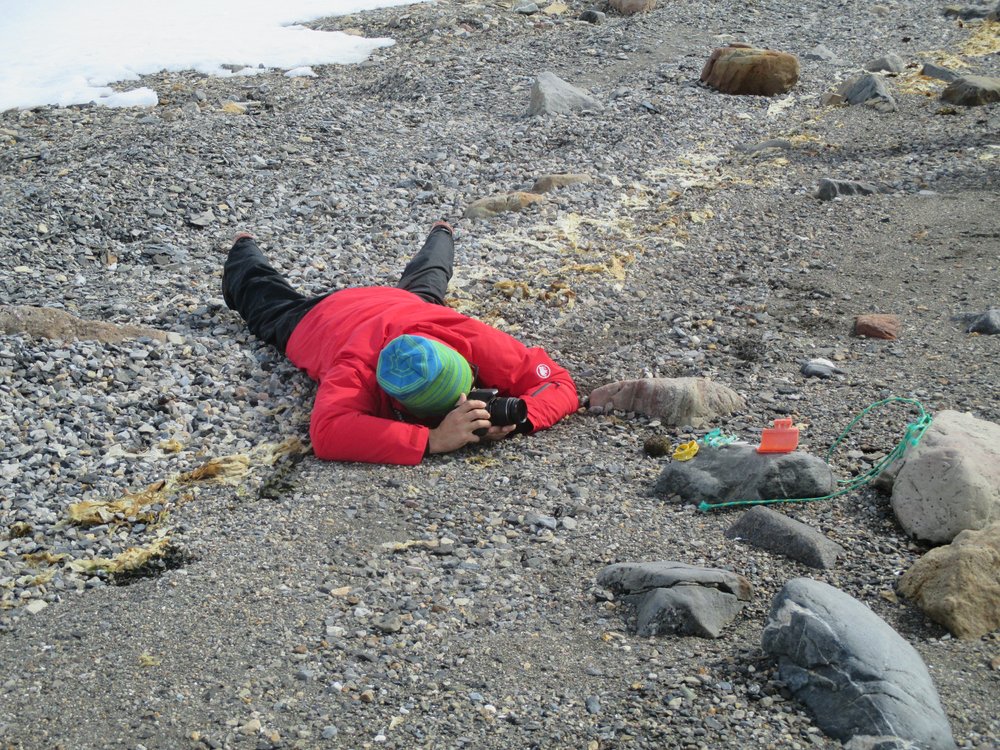
The beach where we landed was small gray pebbles, leading into a long bank of soft, grainy snow. The 26 artists with whom I was travelling (with The Arctic Circle) then all went about experiencing the Arctic: taking photographs, recording sounds, digging in the snow, lying in the snow, drawing, and writing. There was Bogdan Luca, gathering the few pieces of plastic that littered the shore. He placed them together, took photographs. I pocketed the two pieces I found—a green plastic cap and a hefty piece of white plastic. Both fit neatly in my pocket. I thought of the bags and bags of garbage I haul out of the Tivoli Bay on the Hudson River, and this seemed nothing. But it also felt too much: should this landscape not be pristine?
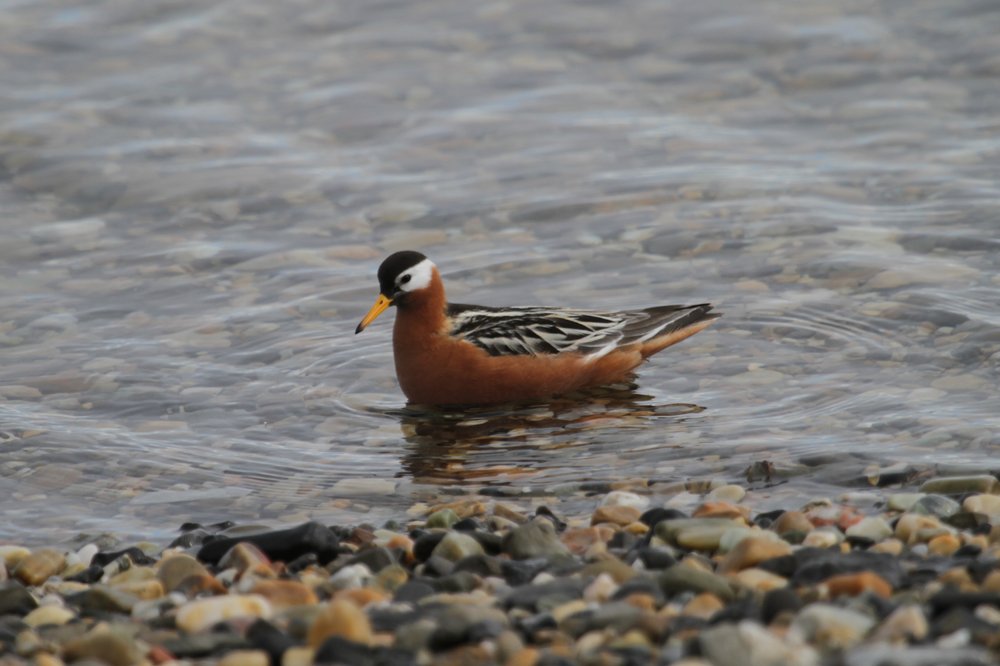
And I thought of the ways that picking up garbage is like birding. The more you look for birds, the more you see. It’s like playing Russian dolls with the natural world. And, once you start spotting garbage, you see it everywhere. At the next landing, all I could see was the plastic left behind or dumped overboard, and washed ashore.
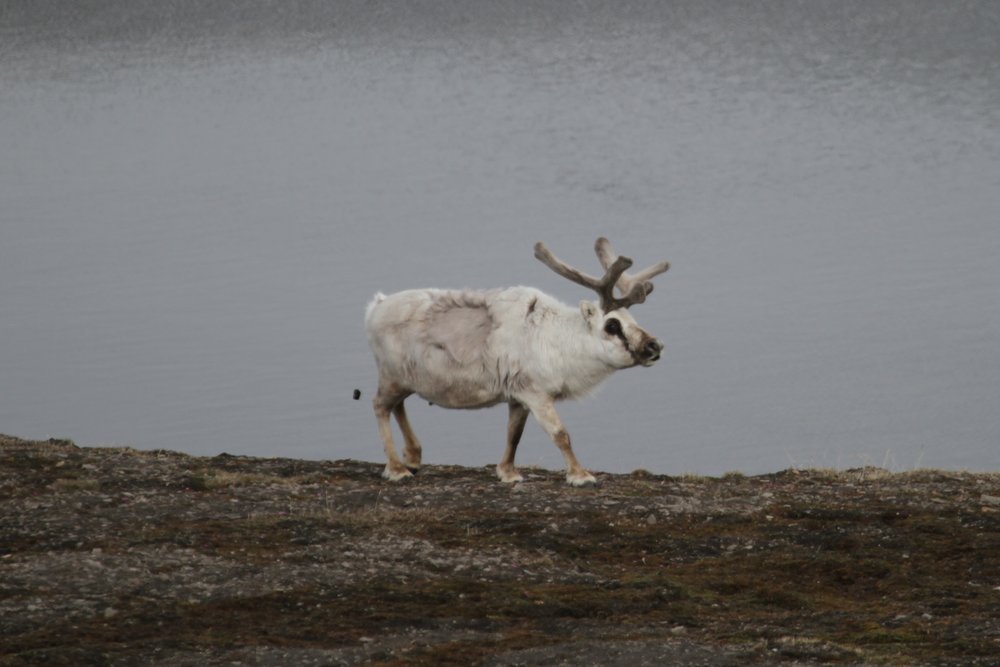
The plastics I gathered will be taken back to Longyearbyen and there, I am told, an artist will create something with these bags of stuff brought back from travelers around the island of Spitsbergen. I look forward to what is created from what is not wanted.
A Birdy Day
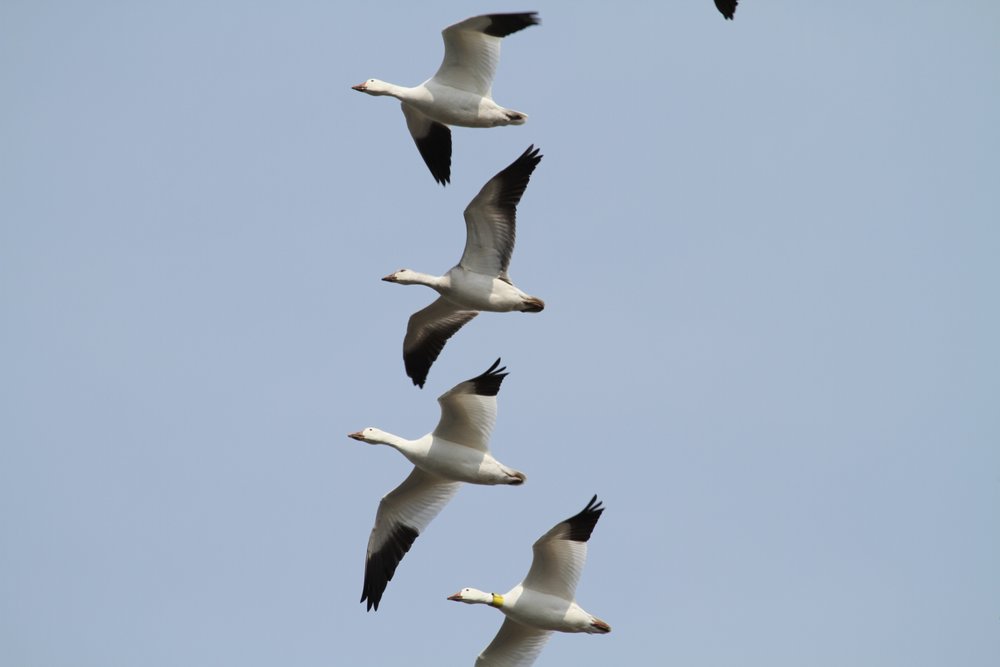
So when, on Sunday, my friend Bruce Robertson and I went out to see what ducks were coming through the valley, I was stunned by the masses of birds. Hundreds of Canada Geese congregated on the fields at Greig Farm and a flock of over 100 Snow Geese with their black tipped wings skittishly took off, circled and landed. In every direction I looked there were birds coming in or taking off. A puddle of ducks—the puddle just freshly melted ice from this interminable winter—brought me a Pintail with its elegant neck and an American Wigeon.

So when, on Sunday, my friend Bruce Robertson and I went out to see what ducks were coming through the valley, I was stunned by the masses of birds. Hundreds of Canada Geese congregated on the fields at Greig Farm and a flock of over 100 Snow Geese with their black tipped wings skittishly took off, circled and landed. In every direction I looked there were birds coming in or taking off. A puddle of ducks—the puddle just freshly melted ice from this interminable winter—brought me a Pintail with its elegant neck, and an American Wigeon.
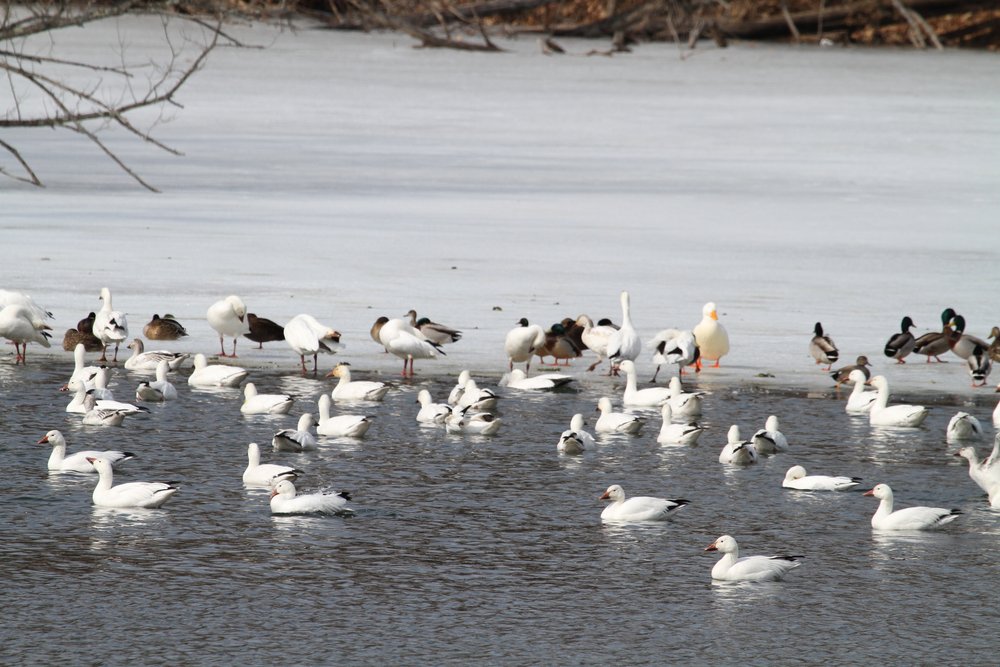
Seeing so many birds in one day, I was intoxicated. And I am trying to decide if the abundance felt so abundant because I’m coming out of winter or if simply lots of birds are a rare thing. I have been spending my long winter evenings sitting by the fire reading the journals of Alexander Wilson, the father of American ornithology. The sheer number of birds within his travels there in early 19th century is a joy to read of: hundreds of Clapper Rails in one day! Red-headed woodpeckers galore! If I see one of these birds I dance a jig for days.
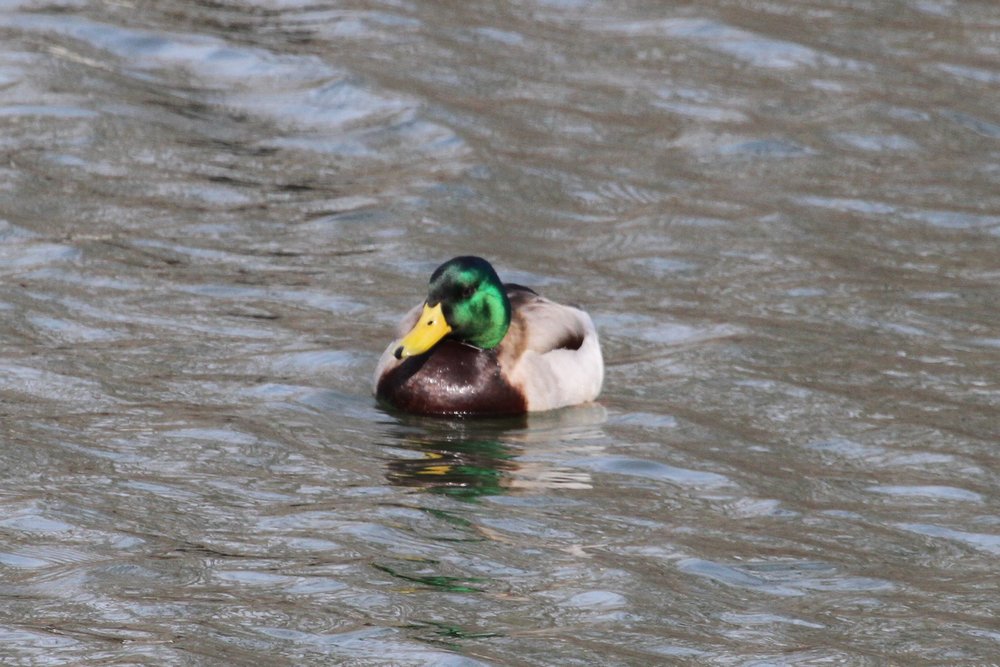
Feeding Birds

The birds at my feeder this cold winter season have been fairly consistent: House Finch, the males turning more red through the winter; Goldfinch in their little yellow tuxedos; Black-capped Chickadee, ready to perch on my head while I refill the feeder; White-breasted Nuthatch peering head-down from a neighboring tree; Tufted Titmouse, their wide eyes in a constant stat of alarm; White-throated Sparrows showing off their striped helmets; from time to time a splash of red that is the Cardinal; and a few Mourning Doves, like loaves of bread on a limb, waiting their turn to forage on the ground. I spend a lot of time with my binoculars watching them come and go. They become, in my mind, my birds. We agree the feeder should be full when the sun comes up. We agree the cat should watch from the safety of the window. We agree they are beautiful.

The birds at my feeder this cold winter season have been fairly consistent: House Finch, the males turning more red through the winter; Goldfinch in their little yellow tuxedos; Black-capped Chickadee, ready to perch on my head while I refill the feeder; White-breasted Nuthatch peering head-down from a neighboring tree; Tufted Titmouse, their wide eyes in a constant state of alarm; White-throated Sparrows showing off their striped helmets; from time to time a splash of red that is the Cardinal; and a few Mourning Doves, like loaves of bread on a limb, waiting their turn to forage on the ground. I spend a lot of time with my binoculars watching them come and go. They become, in my mind, my birds. We agree the feeder should be full when the sun comes up. We agree the cat should watch from the safety of the window. We agree they are beautiful.

It was while watching my birds one morning that I noticed a male House Finch with a clouded over eye. My heart sank. I took down the feeder even before looking up what might be wrong. Avian conjunctivitis is a disease that has spread on the East Coast in recent years. Infected birds become blind. Unable to find food, they die. I watched as the finch at my feeder dove in for a sunflower seed, then returned its good eye to vigilance. It needed that one eye for both seeing and to look out for a hungry Cooper’s Hawk that might rush through. Living with one eye clearly challenged the bird.
For a while, the Cornell Lab of Ornithology was tracking cases of the disease, which seems isolated to the House Finch. Funding dried up and the project shelved, but the disease clearly continues. Later that day, the DEC sent out an email reminding people to clean their bird feeders. Last year at this time, Redpolls had been dying from diseases, often spread at feeders. Feeders need to be cleaned every two weeks in a 10 percent bleach solution. It’s an odd feeling to be helping the birds and at once helping to spread illness. To feed or not?

For now, my job is to keep the feeder full, and clean.
Mute Swans

Here are the reasons why the DEC has decided on this move—which has caused an outcry throughout the state, the country and even the world. A friend from Australia sent a link to a story in their papers about this plan, making us Yanks out to be pretty cruel!

Here are the reasons why the DEC has decided on this move—which has caused an outcry throughout the state, the country and even the world. A friend from Australia sent a link to a story in their papers about this plan, making us Yanks out to be pretty cruel!

Swans eat the submerged aquatic vegetation that other waterfowl also eat. The two other Swans sometimes—though rarely—seen in the State are the Tundra and Trumpeter. They hardly overlap in geography, the Tundra and Trumpeter to the north and the Mute mostly on Long Island. There are a lot of studies on SAV, which is indeed scarcer than it should be. But one idea might be to eliminate the invasive water chestnut, which clogs bays and makes it harder for SAV to thrive. Rather than kill off a few thousand swans, pull up some plants. No doubt this would be a more expensive and complicated solution. But it troubles me that we’ve gone for the quickest, easiest solution here.
Swans are aggressive to other animals and humans. This is the most ridiculous reason. All animals can be aggressive. But we don’t expect birds to be aggressive because largely we stay away from their hidden nests. But Swans are big and beautiful and people do incredibly stupid things like take photographs of their infants walking toward a bird twice the size of the child. A public education program could start to help with this problem. Mute Swans are not sweet. They are not pets. They are enormous birds that can be enormously aggressive. They need space.
Hazards to aviation. This is perhaps the real reason the swans are being eliminated and I wish everyone were honest about this. BASH (Bird Aircraft Strike Hazard) is a major expense for the industry (though I like that the language makes is sound like birds collide with planes—as if they don’t belong in the sky—rather than planes hitting birds, like cars run over deer). “Planes hit birds all the time,” writes financial journalist Eric Uhlfelder in the New York Times. US Airways Flight 1549, which made its celebrated landing in the Hudson River struck Canada Geese, and in the past 23 years hitting birds has forced one plane a day to land prematurely. I’m going to guess that not all flights were as lucky as Flight 1549, piloted by Captain Sullenberger. The number of premature landings is an extraordinary figure, and for the safety of all—birds hit and people in those planes—something we should do something about. But we can’t kill every bird in the sky (though we do kill off about 25,000 Canada geese a year). A more inventive solution must be found. Avian radar?
Here’s what I want to say: Let’s not first reach for a gun; let’s be more imaginative about how we can live together on this small planet.
If you want to agitate, Senate Bill S6589 supported by Tony Avella is asking for a two year moratorium on the slaughter until more evidence can be offered to kill of the Swans.